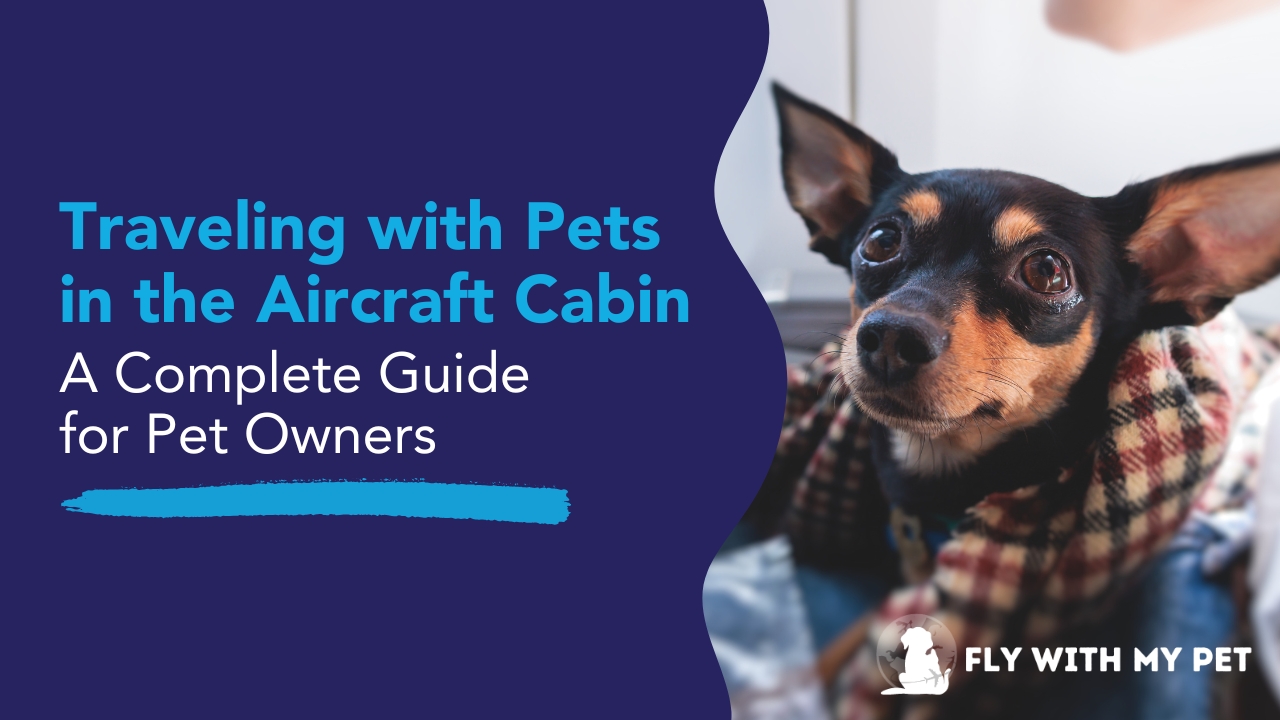
Traveling with your pet in the aircraft cabin can be a stress-free experience with proper preparation. Many pet owners prefer to keep their pets with them rather than checking them as cargo, but navigating airline policies, packing appropriately, and ensuring your pet’s comfort require careful planning. In this guide, we’ll walk you through everything you need to know to successfully fly with your pet in the cabin.
Understanding Airline Policies
Each airline has its own rules regarding pet travel, so it’s essential to check your airline’s pet policy before booking your flight. Here are some key factors to consider:
- Pet Size and Breed Restrictions: Most airlines allow small dogs and cats to travel in the cabin if they fit comfortably in an airline-approved carrier under the seat in front of you.
- Fees and Reservations: Airlines charge a pet travel fee, typically ranging from $50 to $200 each way. Some airlines have a limited number of pet spots available per flight, so book early.
- Required Documents: Some airlines and destinations require a health certificate from a veterinarian, proof of vaccinations, or other paperwork.
- International Travel: If you’re traveling internationally, research the pet import regulations for your destination country, as some places have quarantine requirements.
Flywithmypet.com provides airline-specific guides to help you navigate this information and find the right airline for you and a specific guide on traveling with large dogs in the cabin.
Checking Pet Travel Regulations and Getting a Travel Certificate
Ensuring that you have the correct documentation is crucial for smooth pet travel, especially if you are traveling internationally. Here are some steps to take before your flight:
- Health Certificate: Many airlines and international destinations require a health certificate issued by a licensed veterinarian within a specific timeframe before travel (often 10 days).
- Vaccination Records: Ensure your pet’s vaccinations, including rabies, are up to date. Some destinations may require additional vaccinations or treatments.
- Microchip and Identification: Some countries mandate that pets be microchipped for identification. Even if it’s not required, it’s a good safety measure.
- Country-Specific Rules: Research the destination country’s pet import regulations, including quarantine rules and additional health screenings. FlyWithMyPets Travel Assistant can easily provide you will all the specific requirements and timelines for your destination including USDA endorsement of your pet’s health certificate.
Choosing the Right Pet Carrier
Your pet’s carrier must meet airline requirements and be comfortable for your furry friend. Here’s what to look for:
- Size: The carrier should be large enough for your pet to stand, turn around, and lie down but small enough to fit under the seat.
- Ventilation: Choose a carrier with plenty of mesh panels for airflow.
- Security: Ensure the carrier has secure zippers or latches to prevent escape.
- Comfort: Line the bottom with a soft pad or blanket and consider placing a familiar toy or an item with your scent inside to keep your pet calm.
Find airline-approved dog and cat carriers in these guides.
Preparing Your Pet for the Flight
Flying can be a new and overwhelming experience for pets. Follow these steps to help your pet feel more comfortable:
- Acclimate to the Carrier: Introduce your pet to the carrier weeks before the flight. Let them spend time inside it with treats and toys to create positive associations.
- Exercise Before the Flight: A long walk or play session before heading to the airport can help burn off excess energy and keep your pet calmer.
- Limit Food and Water: Feed your pet a light meal a few hours before departure to prevent motion sickness. Offer water to keep them hydrated.
- Potty Breaks: Take your pet to a designated relief area at the airport before going through security.
Navigating the Airport and Security
TSA and other airport security agencies have specific procedures for screening pets. Here’s what to expect:
- Security Screening: You will need to remove your pet from the carrier while the carrier is X-rayed. Keep a secure hold on your pet or use a leash to prevent escape.
- Finding Pet Relief Areas: Many airports have designated pet relief areas—check your airport’s website for locations in advance and plan for this in your travel time.
- Boarding the Flight: When boarding, keep your pet calm by speaking softly and keeping their carrier stable.
Keeping Your Pet Comfortable During the Flight
- Avoid Opening the Carrier: Keep your pet inside the carrier to prevent stress or escape.
- Stay Calm and Reassuring: Speak softly to your pet if they seem anxious.
- Consider Calming Aids: Some pets benefit from natural calming treats or pheromone sprays, but consult your vet before using any sedatives.
Arrival and Post-Flight Care
- Let Your Pet Stretch: As soon as you reach a pet-friendly area, allow your pet to move around and relieve themselves.
- Offer Water and Food: Rehydrate your pet and offer a light meal if they missed their usual feeding time.
- Monitor Their Behavior: Some pets may take time to adjust after flying. Keep an eye on their behavior and provide extra comfort as needed.
Final Thoughts
Traveling with your pet in the aircraft cabin is possible with the right preparation. Understanding airline policies, selecting the right carrier, and ensuring your pet is comfortable can make all the difference. With thoughtful planning, you and your pet can enjoy a smooth and stress-free journey together. Safe travels!
